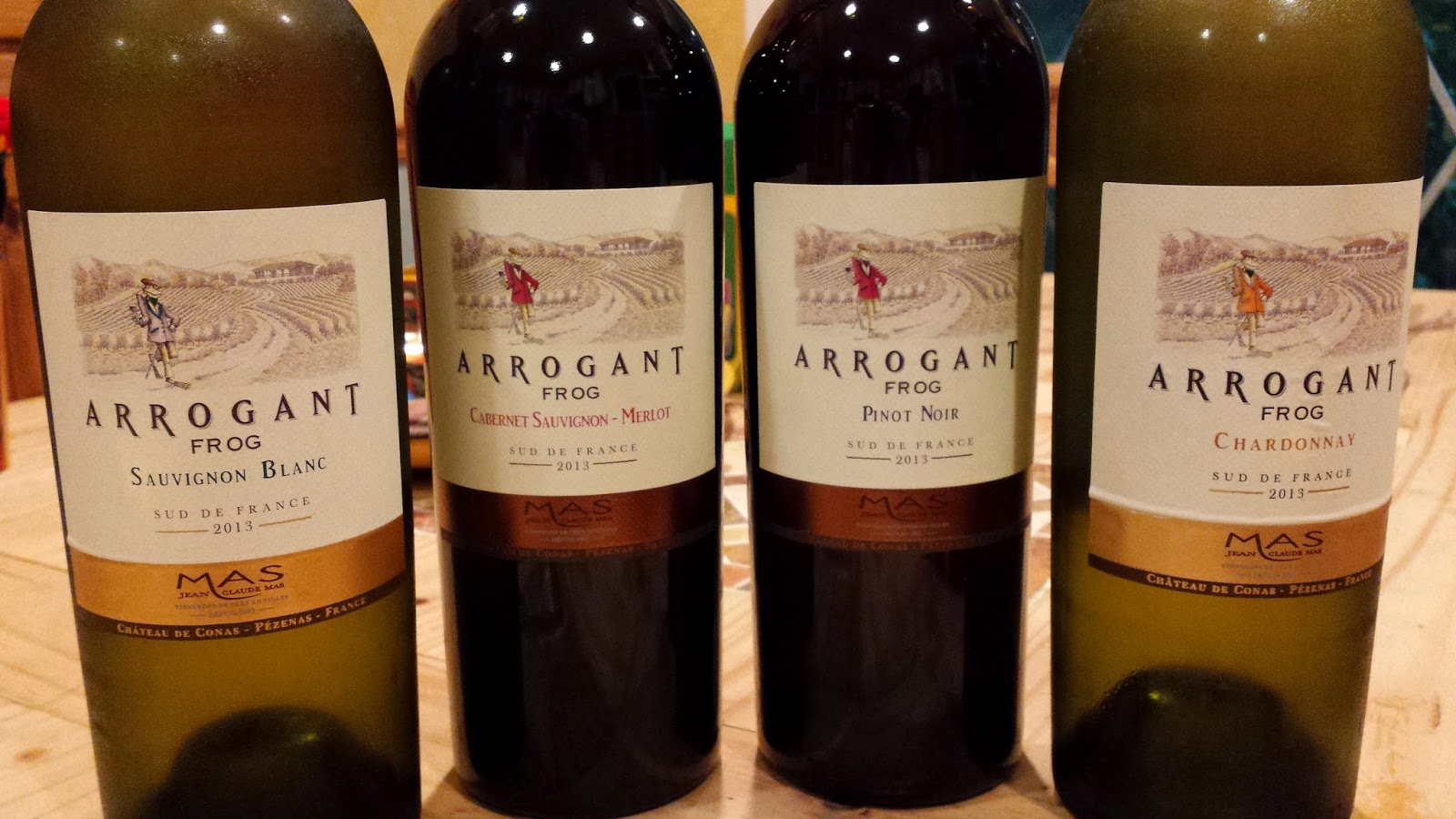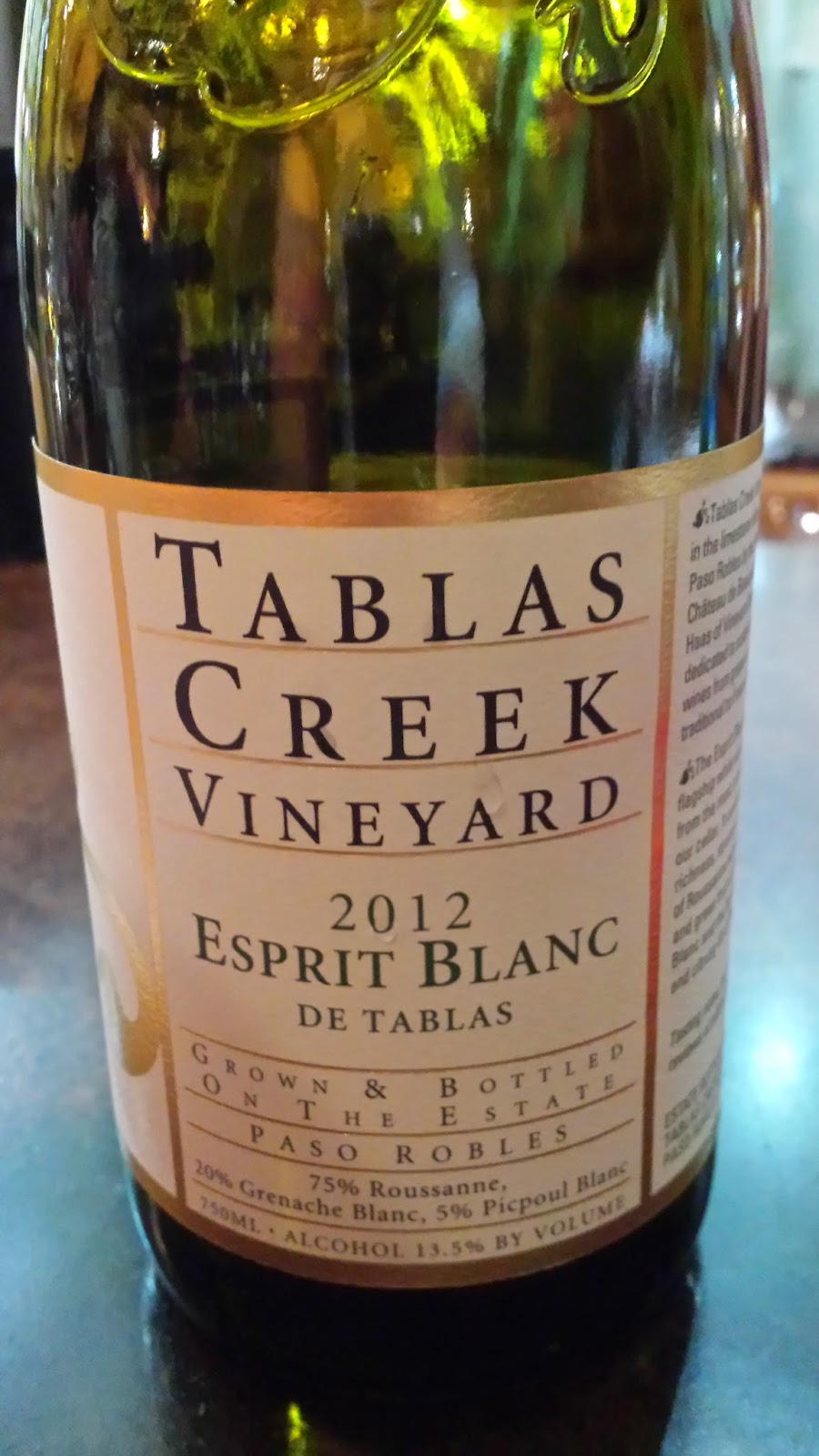

 During the 2014 Wine Bloggers Conference, I took a break from the wine activities to visit Buelton's Ascendant Spirits - Santa Barbara's first legal distillery since prohibition. The one year old company produces a range of spirits from aged bourbon, corn whiskey, and vodka. I was very impressed with their portfolio, starting with the Semper Fi - a corn whiskey distilled from red, white, and blue corn. Their Silver Lightning Moonshine is also smooth, with a sweet corn flavor and slow burn. The star could be the American Star Caviar Lime Vodka, a corn vodka, fermented with low acidic caviar limes, and distilled six times. This is not your everyday flavored vodka; subtle lime with herbal characters. However, there's also the five year aged Breaker Bourbon, a Double Gold medal winner at the 2014
San Francisco World Spirits Competition. You may ask, "How is is possible for the distillery to sell a five year old aged bourbon if the operation has only existed for just over one year?"
During the 2014 Wine Bloggers Conference, I took a break from the wine activities to visit Buelton's Ascendant Spirits - Santa Barbara's first legal distillery since prohibition. The one year old company produces a range of spirits from aged bourbon, corn whiskey, and vodka. I was very impressed with their portfolio, starting with the Semper Fi - a corn whiskey distilled from red, white, and blue corn. Their Silver Lightning Moonshine is also smooth, with a sweet corn flavor and slow burn. The star could be the American Star Caviar Lime Vodka, a corn vodka, fermented with low acidic caviar limes, and distilled six times. This is not your everyday flavored vodka; subtle lime with herbal characters. However, there's also the five year aged Breaker Bourbon, a Double Gold medal winner at the 2014
San Francisco World Spirits Competition. You may ask, "How is is possible for the distillery to sell a five year old aged bourbon if the operation has only existed for just over one year?" Well this week, Eric Felten, posed that very question in his latest post for the Daily Beast, not only posing the question, but basically insinuating that Ascendant Spirits is committing fraud. In his post, Felton describes how many distilleries source whiskey from a former Seagram's distillery called MGP, located in Lawrenceburg, Indiana. Felton maintains that distilleries hide this fact from their customers and as for Ascendant, here's the money quote:
Or take Breaker bourbon, the “first bourbon produced in Southern California since Prohibition.” The Buellton, California company behind the brand, Ascendant Spirits, wasn’t started until 2013. Yet, they brag their “ultra small batch bourbon” is aged 5 years. So how do you open a distillery one year and have 5- or 15-year-old whiskey to sell the next? Not by making it.Immediately after reading the article, I drafted an email to Paul Gertman, Ascendant's Chief Financial Officer asking for his response. He replied rather quickly, first thanking me for asking for a response, something that Felton failed to do. Then Gertman described how Ascendent is very forthcoming with MGP as the distillate source, and how many reviewers, such as drinkhacker.com, have mentioned the MGB connection.
 You may still be thinking that something just doesn't seem right, and Dave Lieberman, over at OC Weekly, argues quite persuasively that, it really doesn't matter. Lieberman first compares MGP to food co-packers who are utilized when demand outpaces supply. He then follows the same line of thought that Gertman discussed in his reply, although Gertman was more direct: "What is misleading is the article's insinuation that all whiskey from MGP distillate is essentially the same product with new labels. That is
not true."
You may still be thinking that something just doesn't seem right, and Dave Lieberman, over at OC Weekly, argues quite persuasively that, it really doesn't matter. Lieberman first compares MGP to food co-packers who are utilized when demand outpaces supply. He then follows the same line of thought that Gertman discussed in his reply, although Gertman was more direct: "What is misleading is the article's insinuation that all whiskey from MGP distillate is essentially the same product with new labels. That is
not true."  Whiskey starts off as fermented mash - basically beer - from barley, rye, wheat (or over 51% corn for bourbon) which is then distilled. For many whiskeys like Ascendant's Breaker Bourbon, this distillation process occurs at a contract facility. Once the spirit is moved into barrels and aged, the geographic location of the warehouse and the physical location of the barrel within the warehouse have an affect on the final product.
Whiskey starts off as fermented mash - basically beer - from barley, rye, wheat (or over 51% corn for bourbon) which is then distilled. For many whiskeys like Ascendant's Breaker Bourbon, this distillation process occurs at a contract facility. Once the spirit is moved into barrels and aged, the geographic location of the warehouse and the physical location of the barrel within the warehouse have an affect on the final product. Then the legal production process commences. I preface production with "legal" because there are federal statutes which dictate the differences between distillation and production and how the finished bourbon is labelled. Production is the artistic ability of master distillers and blenders to regularly taste the aging spirit and determine which barrels to blend. The idea is consistency and since the characteristics of the raw ingredients will differ year over year or each barrel will impart different flavors into the spirit, the art of blending is key. Master distillers and blenders, like Ascendant's Steve Gertman, impart their own blending skills and preferences into the final product. This is why whiskey, from one distillery to another, differs quite dramatically - regardless of the distillation source. And it is also why when Ascendant claims their bourbon is the “first bourbon produced in Southern California since Prohibition”, they are legally and technically accurate. The production process occurs in Buellton.
Then the legal production process commences. I preface production with "legal" because there are federal statutes which dictate the differences between distillation and production and how the finished bourbon is labelled. Production is the artistic ability of master distillers and blenders to regularly taste the aging spirit and determine which barrels to blend. The idea is consistency and since the characteristics of the raw ingredients will differ year over year or each barrel will impart different flavors into the spirit, the art of blending is key. Master distillers and blenders, like Ascendant's Steve Gertman, impart their own blending skills and preferences into the final product. This is why whiskey, from one distillery to another, differs quite dramatically - regardless of the distillation source. And it is also why when Ascendant claims their bourbon is the “first bourbon produced in Southern California since Prohibition”, they are legally and technically accurate. The production process occurs in Buellton. Both Gertman and Lieberman also illustrate how many of today's most popular bourbon brands (Pappy Van Winkle) are actually contract "crafted" at distilleries with extra capacity. Along with Pappy, my favorite bourbon, Black Maple Hill, is distilled by Buffalo Trace Distillery. Local DC area readers can compare this to Beltway Brewing Company's contract brewery and how they assist other breweries (Crooked Run Brewing and Denizens Brewing Co.) expand or commence operations.
That being said, it is quite distasteful for distilleries who contract through MGP to attempt to hide this fact from consumers. Both Lieberman and Felten mention a few and these companies should be admonished if true.
 As for Ascendant Spirits, they are very candid in their use of MGB for the Breaker Bourbon. Once the barrels arrive in Buellton (current releases of Breaker have aged in their facility for 18 months), the nightly diurnal temperature swings, which make Santa Barbara County ideal for grapes, also assists the aging bourbon. The full year temperature fluctuations allow more of the oak character to seep into the bourbon within a shorter period of time. Thus, expect more Double Golds, particularly since aging time in Buellton will lengthen for subsequent releases. Plus, a visit to the distillery is definitely
recommended, not only to sample their products, but also to learn about
their still which can be quickly converted to distill whiskey, vodka,
and flavored vodka. For those of us in the DC market, their products are available -- I need to find some Semper Fi to pour for my marine buddies. Cheers.
As for Ascendant Spirits, they are very candid in their use of MGB for the Breaker Bourbon. Once the barrels arrive in Buellton (current releases of Breaker have aged in their facility for 18 months), the nightly diurnal temperature swings, which make Santa Barbara County ideal for grapes, also assists the aging bourbon. The full year temperature fluctuations allow more of the oak character to seep into the bourbon within a shorter period of time. Thus, expect more Double Golds, particularly since aging time in Buellton will lengthen for subsequent releases. Plus, a visit to the distillery is definitely
recommended, not only to sample their products, but also to learn about
their still which can be quickly converted to distill whiskey, vodka,
and flavored vodka. For those of us in the DC market, their products are available -- I need to find some Semper Fi to pour for my marine buddies. Cheers.Update: I received a comment why Ascendant doesn't display the actual State of Distillation on the Breaker Bourbon label as required by federal code - CFR 27 - 5.36 (d). The actual code is displayed below. The front label states "Produced in Buellton", but I do not know what the back label displays. I reached out to Paul Gertman and haven't received a response. This also leads to another question, why the TBB would approve labels that don't follow their own regulations?
5.36(d) State of distillation. Except in the case of “light whisky”, “blended light whisky”, “blended whisky”, “a blend of straight whiskies”, or “spirit whisky”, the State of distillation shall be shown on the label of any whisky produced in the United States if the whisky is not distilled in the State given in the address on the brand label. The appropriate TTB officer may, however, require the State of distillation to be shown on the label or he may permit such other labeling as may be necessary to negate any misleading or deceptive impression which might be created as to the actual State of distillation. In the case of “light whisky”, as defined in §5.22(b)(3), the State of distillation shall not appear in any manner on any label, when the appropriate TTB officer finds such State is associated by consumers with an American type whisky, except as a part of a name and address as set forth in paragraph (a) of this section.




















































